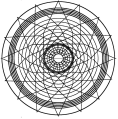Russian Football Fans: Origins, Organization and Mass Actions
Abstract
Russian football fandom movement is going through transformations which call for further holistic investigations of its characteristics in order to develop a comprehensive policy on the issue of youth subcultures. The existing policies in this field are fragmented and do not take into account constantly changing age, social, gender, and ideological aspects of youth subcultures, thus making it harder to predict the direction of the fandom movement development.
Recent football fan action in Russia and its role in national and international sports events have shown that the phenomenon of football fandom, including its organization and cultural norms, calls for close investigation. This investigation is essential not only for understanding the patterns of Russian football fan ‘mass action’, but also for the development of an effective communication strategy with the fandom organizations
Downloads
References
2. BRAKE M. (1995) The Sociology of Youth Cultures and Youth Subcultures in America, Britain and Canada. London: Routledge.
3. BRIMSON D. (2003) Eurotrashed: The Rise and Rise of Europe’s Football Hooligans, London: Headline.
4. BUFORD B. (1990) Among the Thugs. London: Secker & Warburg, 1990
5. Echo Moscow. http://echo.msk.ru/blog/soobshestvo/792179-echo/ (дата обращения: 15.09.2017)
6. FAWBERT J. (2011) 'Social Inclusion and Social Exclusion: "Gentrification" of Football Fandom?' in Long J. et al eds. Delivering Equality in Sport and Leisure Eastbourne: Leisure Studies Association
7. FAWBERT J. (2005) 'Football Fandom and the "Traditional" Football Club: From "Cockney Parochialism" to a European Diaspora?' in Magee J. et al eds. The Bountiful Game? Football Identities and Finances Oxford: Meyer & Meyer Sport
8. Etnolog Igor' Savin - o natsionalizme, korruptsii, zaprete DPNI i nelegal'noy immigratsii. Fergananews. http://www.fergananews.com/article.php?id=6952 (дата обращения: 31.08.2017)
9. HUGHSON J. (2004) Sport in the City Culture. The International Journal of Cultural Policy. 3. 319-330.
10. HUGHSON J.(2009) The Making of Sporting Cultures. London: Routledge.
11. KERR J. (1994) Understanding soccer hooliganism. Buckingham [u.a.]: Open Univ. Press.
12. KOZENKO A., KASHIN O. Vosstaniye karlanov. Molodyye futbol'nyye fanaty diktuyut svoi pravila igry. Kommersant. 21.12.2010 (дата обращения: 15.09.2017)
13. LEVIKOVA S, BOBAKHO V. (1996) Modern youth culture trends : conflict or continuity of generations ? Social Sciences and Modernity. 3. 18-24.
14. LEVIKOVA S. (2002) Youth subculture of youth as a social mechanism of adaptation to a changing world. Human - Culture - Society . Actual Problems of Philosophy , Political and Religious Studies. Moscow: MGU. 198-202.
15. Nezavisimaya gazeta . 31.03.2013
16. OMEL'CHENKO YE. L. (2000) Molodezhnyye kul'tury i subkul'tury.
17. PONOMAREV I., Sports Institute in social identification Russian youth. (Novocherkassk: South-Russian State Technical University (Novocherkassk Polytechnic Institute), 2004)
18. RIA Novosti. http://ria.ru/trend/moscow_disturbances_football_fan_11122010/ . 23.12.2010
19. Russian service BBC. http://www.bbc.co.uk/russian/russia/2010/12/101221_putin_sviridov.shtml . 21.12.
20. SALAHETDINOV (2008) Personal Characteristics of Football Fans in the Youth Subculture. Moscow: RSSU.
21. SHCHEPANSKAYA T. (1993) The symbolism of the youth subculture. SPb.: Nauka.
22. Siberian news agency. http://fed.sibnovosti.ru/incidents/129669-v-moskve-gotovyatsya-novye-aktsii-futbolnyh-fanatov-i-otvetnye-vystupleniya-kavkaztsev
23. Spynet blog. http://spynet.ru/blog/28432.html
24. Teh – nomad. livejournal http://teh-nomad.livejournal.com/395031.html;
25. The new times http://www.newtimes.ru/articles/detail/24717/
26. THOMPSON, E. P. (1991). The Making of the English Working Class. Toronto: Penguin Books. p. 213
27. WILLIAMS R. (1958) Culture and Society. London.

